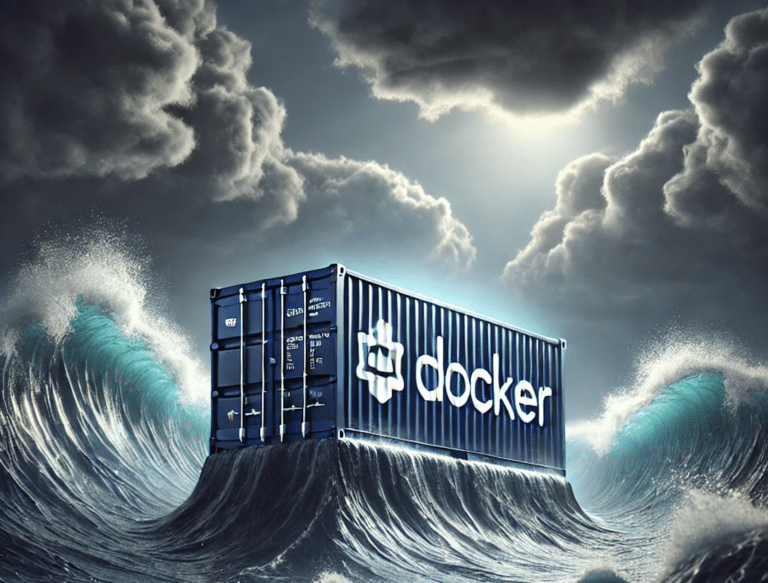The choice between running IoT and embedded systems applications as native apps or in containerized environments (like Docker or Podman) is critical. Both approaches offer distinct advantages, but large-scale IoT projects need more than just ease of deployment. With the rise of container orchestration solutions like Balena, there’s been a surge in using containers for IoT. However, containers alone don’t solve the entire problem, especially when you need to manage the operating system itself and you don’t want any vendor lock-in on the hardware side. This is where solutions like qbee.io shine.
Containers: A Flexible and Scalable Deployment Model
Containers have rapidly become a favorite for developers and system administrators due to their portability, lightweight nature, and ease of deployment. For IoT, using containers offers several advantages:
Consistency Across Environments: A container encapsulates an application with its dependencies, ensuring it runs the same way regardless of the hardware or environment. This drastically reduces deployment issues.
Simplified Updates: Containers make it easier to roll out application updates by deploying new container images, whether it’s a small patch or a significant upgrade.
Resource Efficiency: Containers are more lightweight compared to virtual machines, enabling better resource utilization—an essential factor for IoT devices that often have limited processing power and memory.
Isolation: Containers isolate applications, ensuring that one malfunctioning app doesn’t bring down the entire system.
But while containers simplify application management, they don’t address all the challenges IoT systems face—especially those involving the operating system itself. The container engine needs to run on an OS which again needs to be optimised, updated and patched if any security issues arise. It is a strategic advantage to be in full control over the OS and hardware to prevent vendor lock-in.
Native Apps: The Tried-and-True Approach
Running native apps directly on an IoT device’s operating system has long been the traditional approach. While containers offer some advantages, native apps bring their own strengths to the table:
Direct Hardware Access: Native applications generally have better access to the underlying hardware, making them more efficient, especially when dealing with low-level tasks or real-time processing.
Minimal Overhead: Since native apps don’t rely on an intermediary (like a container runtime), they run with less overhead, making them ideal for resource-constrained devices.
Simplified Architecture: For some systems, native apps can mean a simpler architecture, where fewer components (like a container engine) need to be managed or maintained.
However, while native apps can be more efficient for certain tasks, they lack the modularity and portability that containers provide.

Why Container Orchestration Alone Isn’t Enough: The Case of Balena
Container orchestration solutions like Balena have made container management on IoT devices easier by streamlining deployment, updates, and scaling. However, these solutions only address part of the problem. They focus primarily on application-level updates, leaving the operating system unaddressed. This means that you as a customer are always depending on that the supplier really fixes the underlying OS issues. As fast as possible. Each supported board needs a dedicated OS image build. When adding the effort needed to test the new base OS version with all the hardware this can be a lengthy process. And how long will your hardware platform be supported?
For serious, large-scale IoT deployments, managing the operating system is equally crucial. This need is underscored by the Cyber Resilience Act (CRA), which mandates that IoT systems must have robust security measures, including the ability to apply OS-level patches and updates.
Without a solution to manage the OS, even the best container orchestration system leaves your devices vulnerable to security threats and performance degradation. This is a critical oversight that becomes even more pronounced when your deployment spans hundreds or thousands of devices across various locations. Or if you’re in IoT for the long term, with system lifetimes spanning decades.
So make sure that you are in control of your applications, your operating system and your hardware. Preventing vendor lock-in is crucial for security but also for having the commercial edge to find alternatives if the service level deteriorates or price changes negatively impact your IoT case ROI.
The qbee.io Approach: Solving the Full Stack Problem
This is where qbee.io offers a unique solution. Unlike container orchestration tools like Balena, qbee.io goes beyond application management by also addressing OS-level updates. Here’s how:
Full Flexibility for Container or Native Workloads: qbee.io allows you to deploy both containerized and native apps. Whether you’re running Docker, Podman, or a native application, qbee.io can manage the entire lifecycle of these deployments, offering complete flexibility for hybrid approaches.
Operating System Management with Secure OTA Updates: qbee.io stands out by enabling low-level OTA (Over-the-Air) A/B updates for the OS by supporting Yocto and Rauc. This ensures that even the operating system can be updated securely and efficiently, which is vital for long-term device management and compliance with the CRA.
Hardware Agnostic: qbee.io works across any hardware running Linux, which means it doesn’t lock you into specific ecosystems. This includes the ability to create and manage custom Yocto-based Linux systems, updated securely using RAUC (Robust Auto-Update Controller). It supports all Arm, MIPS, RISC-V and x86 hardware. So don’t let your container orchestration tool impact your next hardware decision.
Security and Reliability: The A/B update mechanism ensures that updates are rolled out safely, with a fallback option in case something goes wrong. This prevents bricking devices during an update—a critical feature for large-scale IoT deployments.
- No vendor lock-in: By using qbee.io you rely only on standard open source technologies such as Yocto, Rauc, Docker or Podman. Use any version you like, bleeding edge or long term stable. If you no longer see the value in qbee’s platform, you can continue using Docker or Podman without any vendor lock-in.
Why Flexibility Matters in IoT Projects
IoT projects often have long life cycles, where devices may be deployed for 10 or even 20 years. As technology evolves, new applications will need to be deployed, and existing software will need updates. The ability to run a mix of native apps and containerized environments, while also having full control over OS updates, gives companies the flexibility to adapt to changing needs without having to rip out and replace hardware.
On the other hand, don’t let your software stack limit you in future hardware decisions. Make sure you can create a version 2 of your hardware platform without any limitations or huge implementation costs to your management software vendor.
Additionally, for large deployments, scalability, security, and maintainability are key concerns. Having a solution like qbee.io, which provides the tools to manage both the application and OS layers, ensures your deployment remains secure and up-to-date for its entire lifecycle.
Conclusion
When deciding between containers and native apps for your IoT project, the answer isn’t always clear-cut. Containers offer ease of deployment and management, but native apps can provide better performance and access to hardware. However, managing only the application layer isn’t enough for large-scale deployments, especially in light of regulations like the Cyber Resilience Act.
qbee.io bridges this gap by offering full flexibility to run both containerized and native applications while also enabling secure, low-level OTA OS updates for any hardware. This makes it the only solution capable of addressing the full range of challenges in serious IoT deployments, ensuring that you’re not just managing your apps, but your entire system.
If you are interested to learn more about this feel free to reach out for an informal chat.







